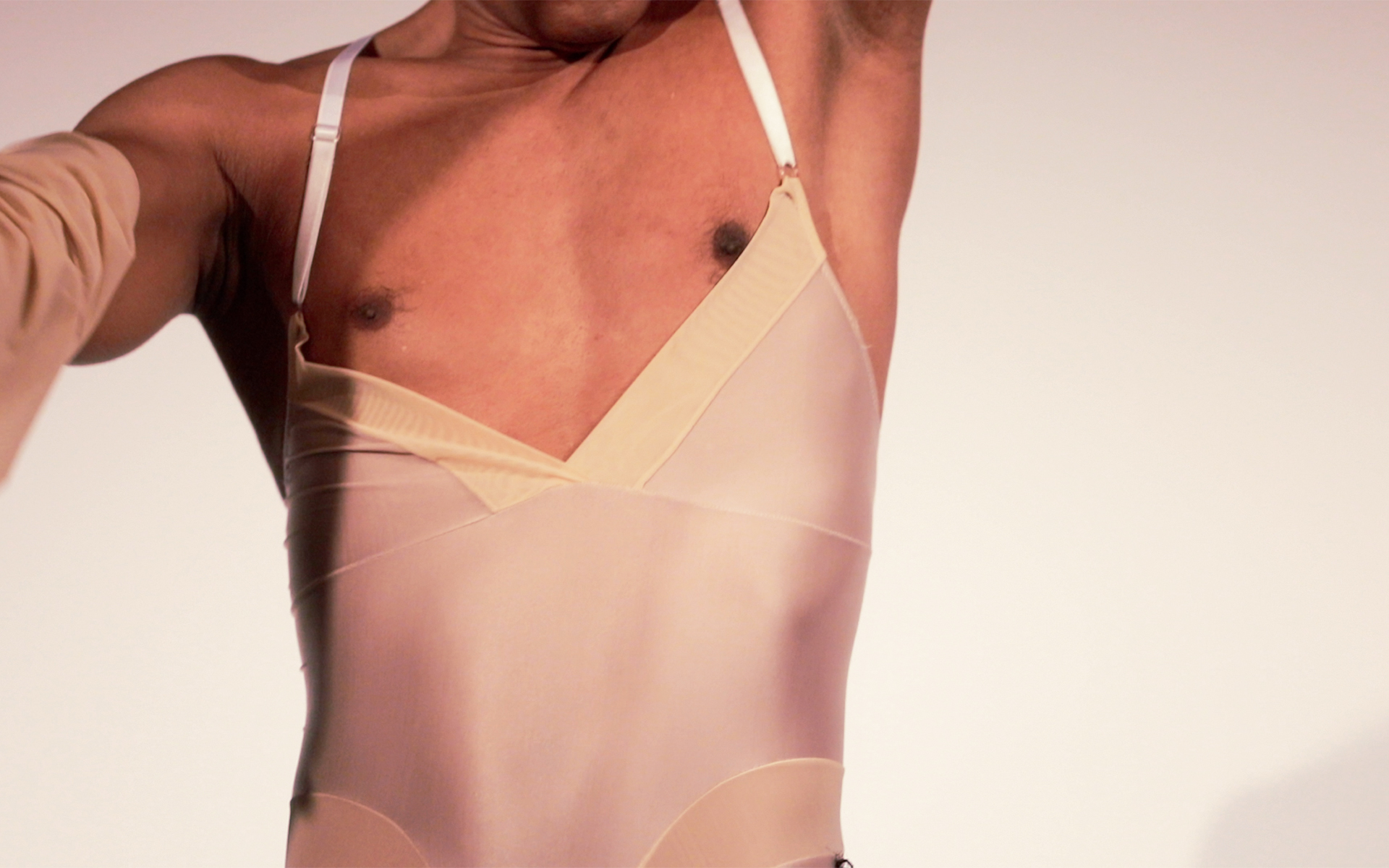The artistic project Giralamoda promotes sustainable fashion through expressions such as dance, theater, cartomancy, and music. It presents 21 performances that narrate the current situation in the fashion industry and innovative sustainable initiatives that help counteract this dangerous chain of consumption.
Thus, on May 26th, the doors of the La Creta Theater in Milan opened with an unforgettable show.
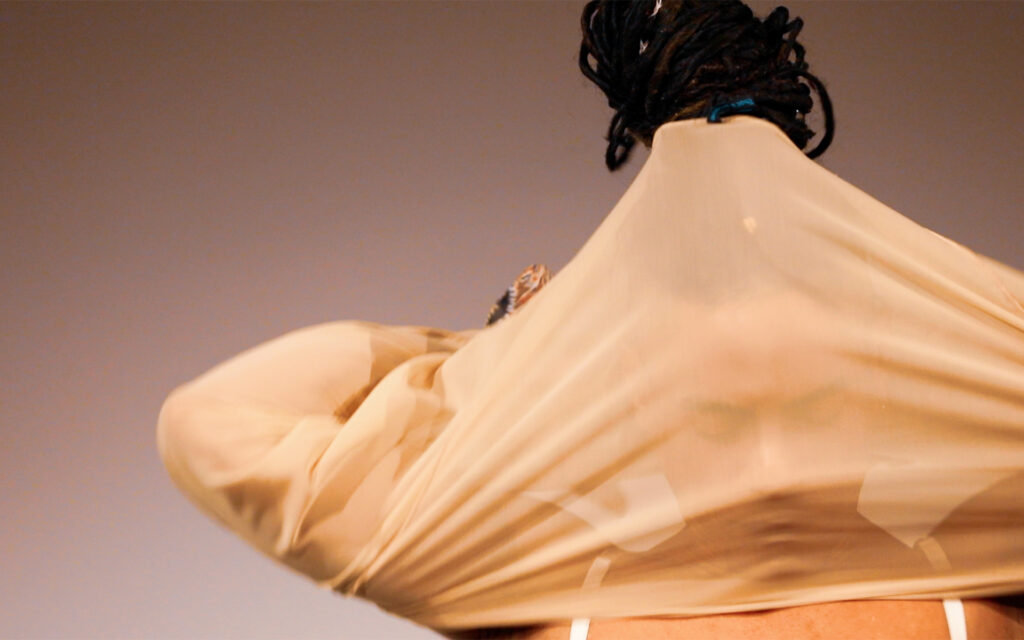
WHEN ART TELLS US ABOUT CIRCULAR FASHION
The show presents 6 performances with a relaxed and comic style involving the audience creatively and spontaneously. GIRALAMODA reveals a play with artistic disciplines that sensitize each individual leading them to question themselves about the use of responsible and conscious fashion.
This manifestation allows the audience to reflect on being part of a consumer chain that, without ethics, can see a completely hopeless environmental panorama.
The conjunction of these arguments illuminates the stage to a group of 7 artists who, with their talent, put the play on stage.
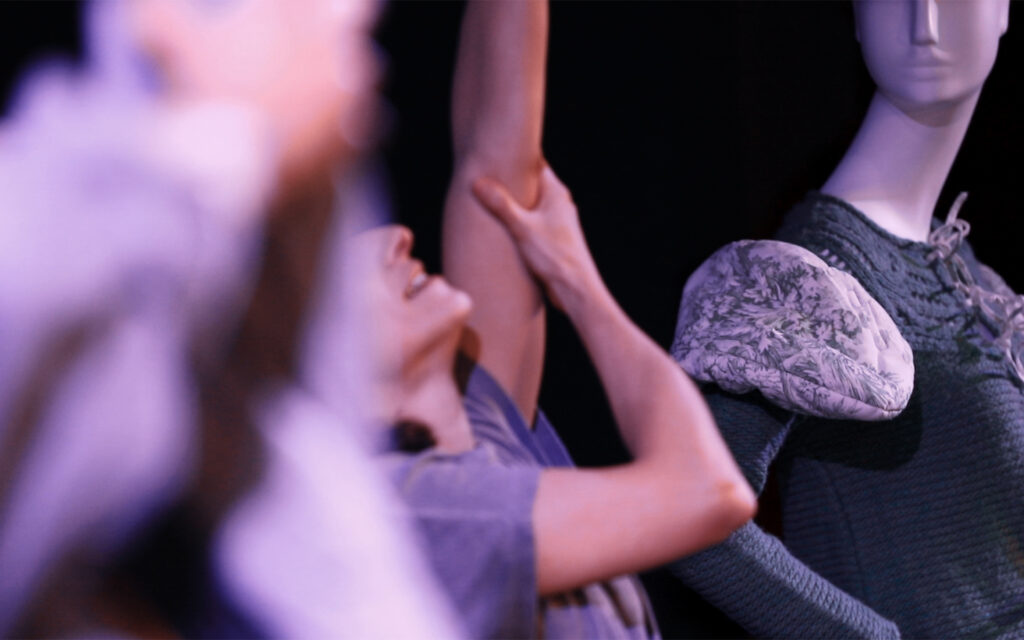
THE PERFORMANCE BEGINS WITH A DANCE
On stage, we see the artists dance: Susana Accornero and Elvio Pereira de Assuncao with their theatrical piece, “LENTO ESSENZIALE” (slow essential). The performance begins in the foreground with the figure of a female snail slowly moving toward a mountain of discarded clothes. This slow movement that characterizes the snail transmits unsuspecting but essential feelings, and as it passes through the space, it does not seem to care about the pressure of the external world.
The snail approaches its antipode, who in the background is represented by an alien figure who frantically discards clothes and accessories, thus creating an uncontrollable accumulation of material that, by interrupting the passage of the snail, creates a scene of polarization with an observer who wonders: what is their common ground? What can happen before the meeting of these two beings who seem opposites?
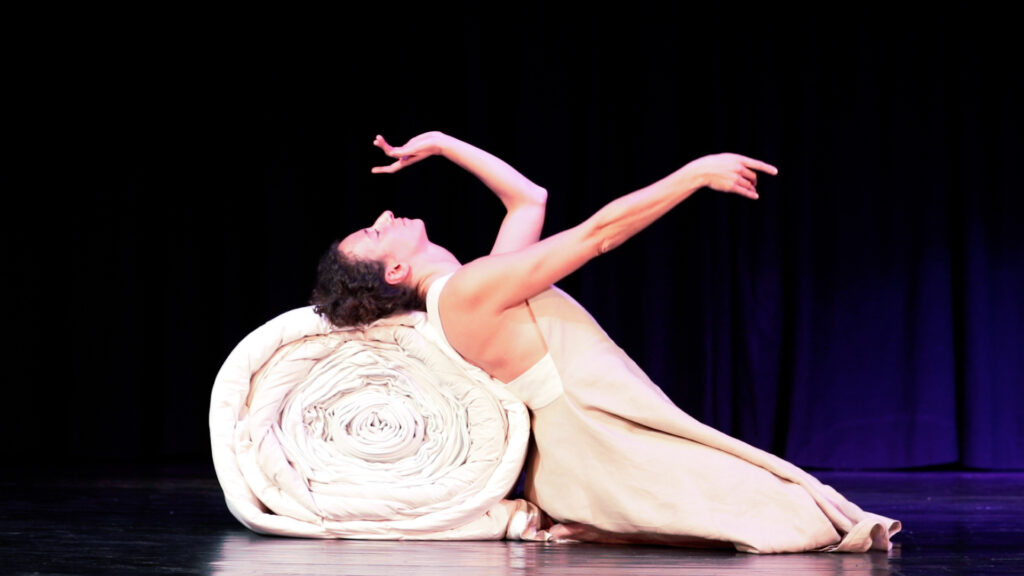
THEATRE
The show gives way to the artist Davide del Grosso who introduces us to: “TUTTO TORNA”(everything comes back). It is a monologue that takes us on a journey through the modern timeline of fashion and recycling.
Its staging proposes a fun language leading us to remember trends in retro fashion. He tells us how the passing of the years has allowed us to see styles that return to be a trend causing an effect in each generation.
The audience laughs while remembering the shoulder pads on jackets of the 90s and how a style apparently ‘ridiculous’ manages to mark an era of modern history.
In his account, he tells us about Upciclyng, the types of recycling methods, and the importance of the vintage fashion market. His story leads us to meditate on the reuse of our clothes. It leads us to consider how we should discard our garments and the option of giving or donating, and to whom we donate. It guides us to consciously review whether entities have an ethical purpose, or not. Then, he mentions the organization Humana Vintage which today deals with ethical circular fashion recycling, being a leader in the European market.
The monologue concludes with a poetic touch mentioning the text: “Dialogue between Fashion and Death” by the poet Giacomo Leopardi. This poem is an exchange of jokes where the author narrates that there is a brotherhood between fashion and death. It shows a deep contempt for modern times and their industrialization with fashion as a symbol of appearance and vanity typical of today’s consumerism.
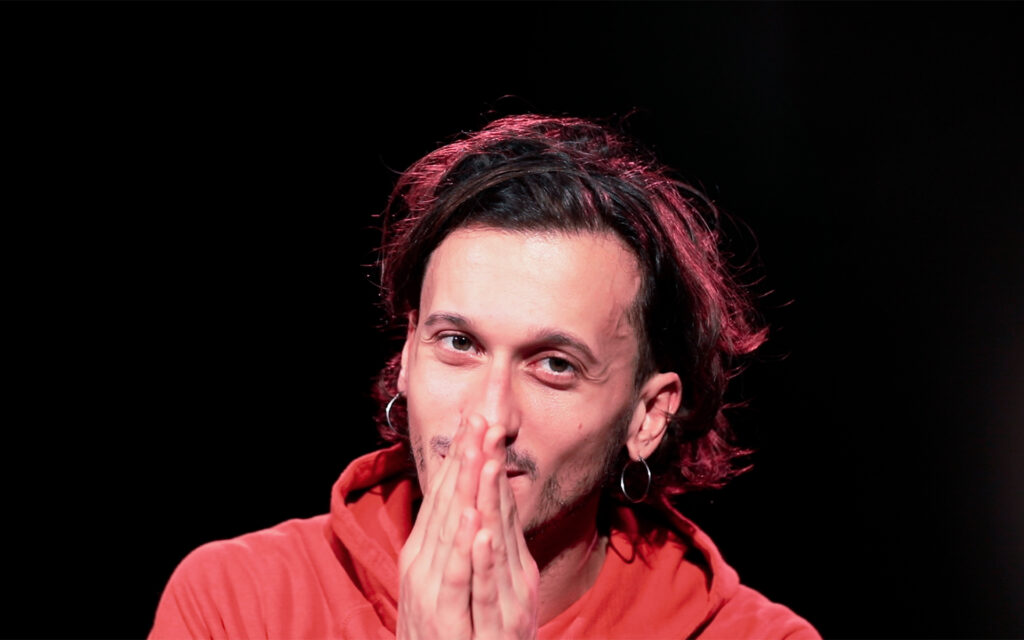
PERFORMANCE
Then, to energize the show, enters the scene with her performance of CARTOMANCIA (card divination) the expert in sustainable fashion: Camilla Nardelli. She involves the public with a game of card divination, in the reading of questions, dialoguing about topics such as fast fashion, the current situation of the fashion industry, the percentages of the use of new garments in the market, and artificial intelligence as a tool in the manufacturing of garments.
Her character responds to the different questions asked, and with the information she provides to the public, we can reflect on how the individual and their personal work DOES count and DOES contribute to the change and the ‘revolution’ of a bio-sustainable fashion.
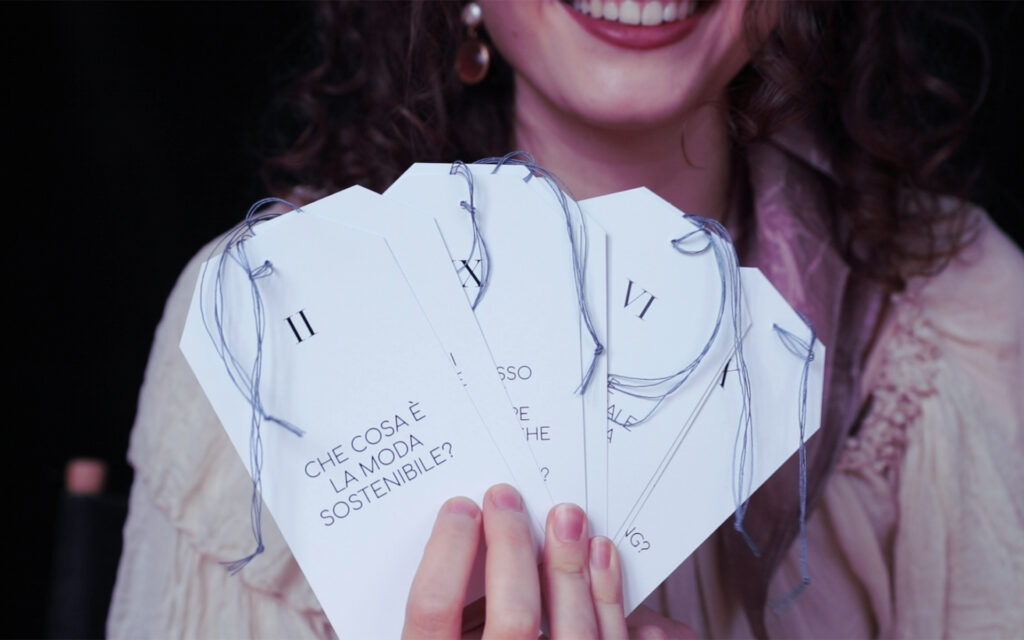
MONOLOGUE
With a new scenography, the artist Chiara Brunetti enters and introduces us: “UNA STORIA TUTTA UMANA” (a completely human story). Her romantic account takes us back to the beginnings of human beings and their evolution with the use of technology. Chiara declaims a poem with her script, takes us into a personal discussion. She uses the metaphor of the relationship between a natural element, such as a wooden cane, and a technological one, such as a cell phone.
Her theatrical monologue invites us to visualize new creative realities with the use of advanced technology and allows us to marvel at innovative and ingenious eco-sustainable projects in the fashion industry, mentioning valuable examples such as Orange Fiber, Piñatex, and Patagonia, organizations that work in the creation of sustainable projects proposing a hopeful future for the environment.
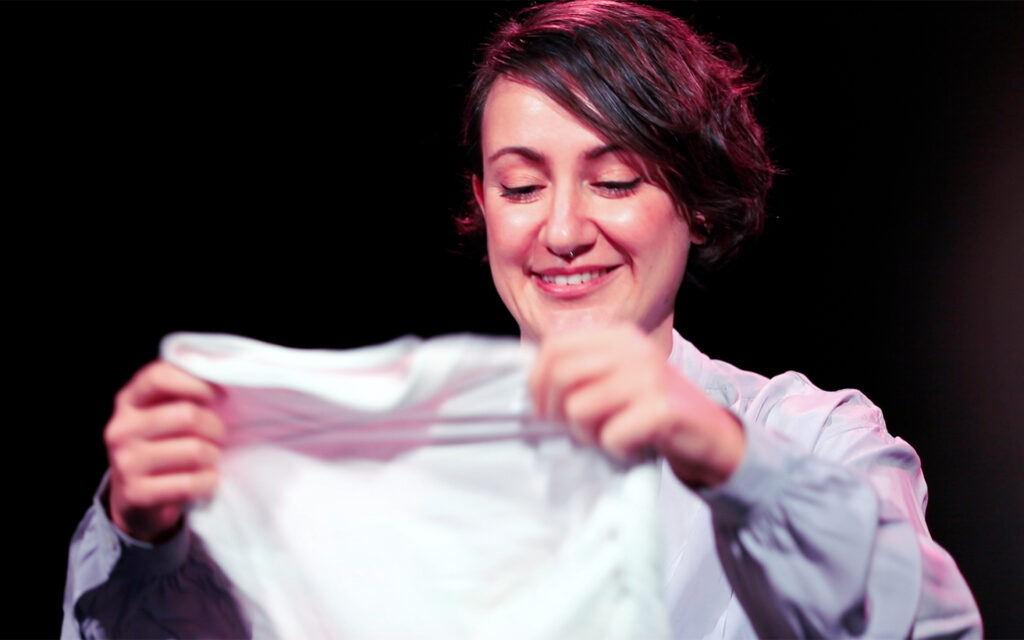
THE DANCE AND THE INNOVATIVE HUMAN BEING
In a second intervention the artists Elvio Pereira de Assuncao and Susanna Accornero present: “TÉCHNE”. It is a performance that, through music, dance, and acting, presents us a human being, innovative and creative by nature, who manages to produce new alternative raw materials from the reuse of natural and synthetic products, who, with the use of science and technology, manages to transform them into new sustainable components.
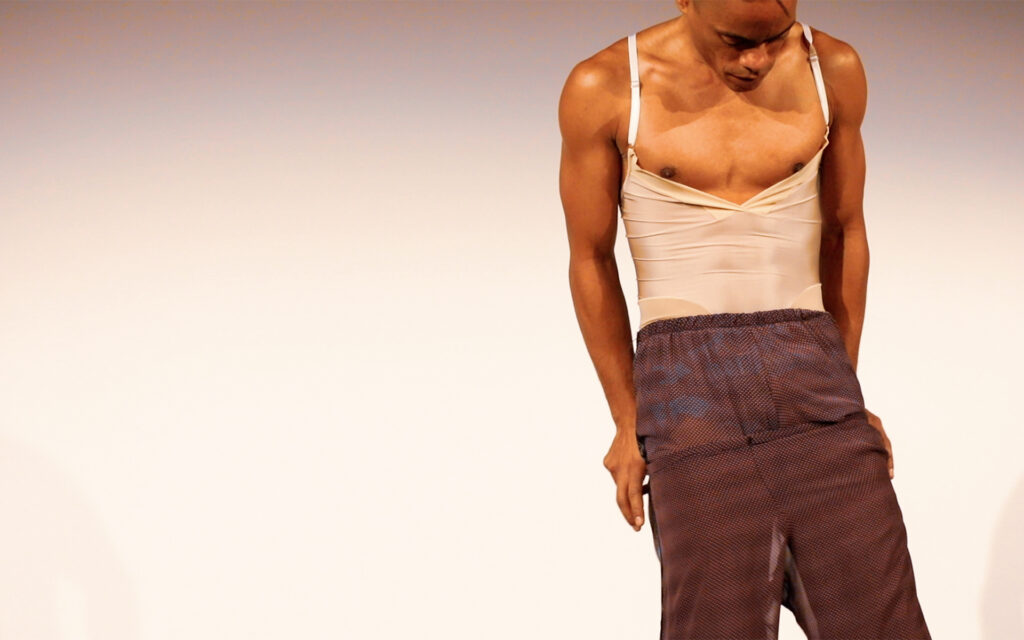
The staging is musicalized by Luca Macchi who makes a contemporary electronic musical proposal.
THE CURTAIN CLOSES
At the end of the event, the group of artists gathers on stage with posters that announce: #CambiaModa (#ChangeFashion) #PayYourWorkers #Payout #WhoMadeMyClothes. After effusive applause, they give the public a handkerchief as a symbology to their phrase: ‘Good revolution.’
The innovative and creative initiative has the sponsorship of sustainable fashion brands like Wrad Living, Casa Gin, Individuals, and Cora Bellotto which were in charge of the costumes of the artists.
BEHIND THE SCENES
The event has been created and produced by TRAMA PLAZA a non-profit organization founded in Milan in 2020 by Erica Brunetti as president and Marta Griso as vice president. They are the winners of the first edition of ‘Scuola del Quartiere’ of the mayor of Milan. They decided to concentrate their objectives on promoting sustainable fashion.
The name Trama Plaza was created in memory of the accident that occurred in Rana Plaza. It was a textile factory that produced outfits for major Western fashion brands in Bangladesh. The collapse of the building where the factory was, left 1,134 people dead.
Today, the organization has 60 women volunteers with a presence throughout Italy.
The GIRALAMODA project makes its first presentation on May 22 and 23, 2021 in Piazza Berlinguer in Milan.
We went on stage for the first time in Berlinguer Square in Milan with the whole play GIRALAMODA, with a marathon of 21 performances one after the other from 3pm to 10pm.
It was not a show with a continuous direction as in the theater, but rather each performance was introduced by me, and the audience could attend one or more performances.”
Erica Brunetti
The play retains its initial expression of freshness and dynamism, proposing a constant conversation between the artist and the public.
Go for more initiatives like GIRALAMODA!


